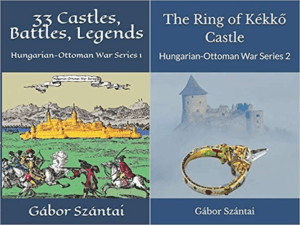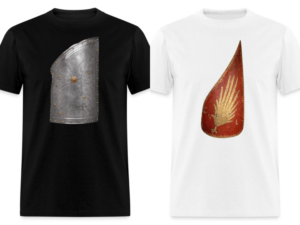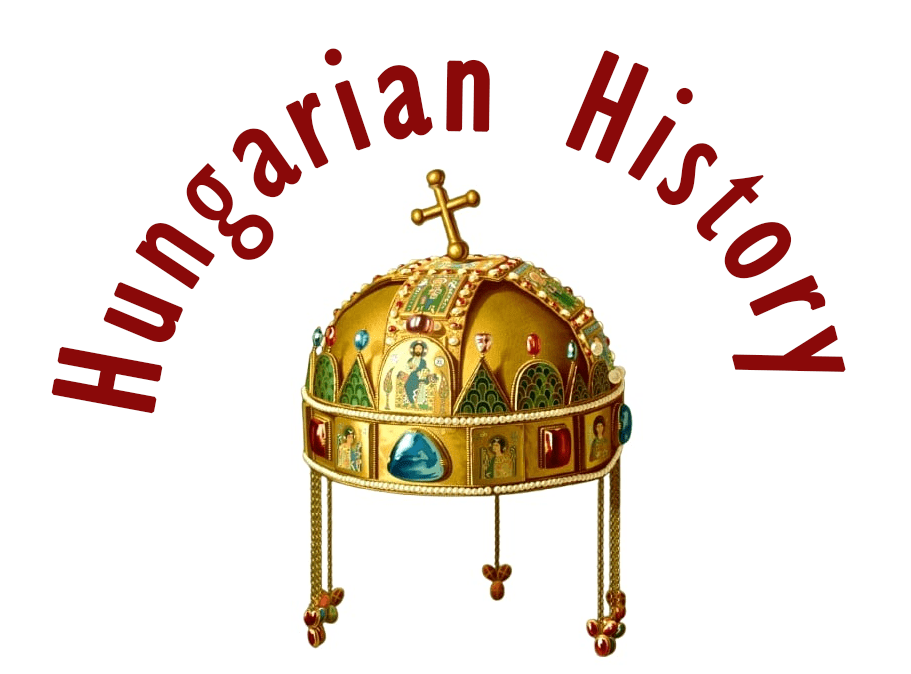Csobánc

Csobánc Castle is one of the fortresses that guarded the highlands of Lake Balaton in Hungary during the Ottoman wars. With the arrival of the Magyar tribes in the 9th century, this region was conquered by the chieftain Léd or Vérbulcsu. However, the Magyars did not conquer these lands until the second half of the 10th century. Csobánc Hill was first mentioned in 1220 when it was donated by Comes Sal of the Atyusz family.

Csobánc Hill used to belong to the Keszi family, whose members served at the king’s court. We know that they had a dispute with some noblemen from Diszel about the ownership of the hill, because they had built a stone house and produced wine there. Finally, in 1225, they reached an agreement and the hill remained the property of the Keszi family, but the nobles were given the right to use the building and the vineyard. This document doesn’t mention the existence of a castle. It is assumed that the stone house was the core of the castle, but it was not mentioned as such until 1272, without naming the owner.

Gyulaffy Demeter of the Rátót clan received Csobánc Castle in 1300 and appointed a castellan named Csaba. We do not know much about the history of the castle in the next 200 years. It certainly belonged to the Gyulaffy family until the second half of the 17th century. Here you can read more about a famous member of the Gyulaffy family:
As for the castle, in the 13th century, there was only a stone tower, but in the 14th century, it was surrounded by stone walls. We know about a castellan of Somló Castle, Leányfalusi Ágoston, who is said to have built “very useful buildings” around Csobánc Castle in 1491. It is believed that he built the outer walls, the moats, and the south-western gate tower with a deep moat in front of it. The ditch was full of sharpened stakes and covered with a board, it was called the “wolf’s ditch”. He probably built the cistern in the courtyard and had other ditches and holes dug on the plateau to hinder the enemy’s siege machines.

Gyulaffy László of Rátót died around 1490 and his widow, Lady Pethő Margit, and his son János inherited the castle. According to a document from 1491, Lady Margit, with the consent of Count Kinizsi Pál of Temes County, gave the castle to her son, Pethő János. Csobánc was an important castle in the chain of fortresses of the Borderland, its most famous captain was Gyulafi László in the 16th century, a descendant of Gyulaffy László of Rátót.
Enjoy the video: https://www.youtube.com/watch?v=7bKr5a1NQ1c
The Turks tried to take it in 1554, but they couldn’t occupy it because one of the walls collapsed during the siege. It was besieged again in 1559 but to no avail. The Ottoman historian Evija Cselebi mentions the fort and the retreat of the Turkish army. The fort became more and more dilapidated, but there was no money in Vienna to repair it, despite its strategic position. Only its garrison was increased.

It was given to the Eszterházy family in 1664. Later the Austrians decided to blow it up. When the Ottoman threat had disappeared and there was no need to keep the castles in Bonderland, these fortresses became dangerous for the king. In fact, they couldn’t blow up the castle because of the War of Independence of Prince Rákóczi Ferenc II.

Szász Márton, the hero of Csobánc castle
The name of Szász Márton was mentioned only once in history. He was a vice-lieutenant, and he and his 30 Hajdú soldiers, together with 30 noblemen, their wives, and children of the area, entered the castle of Csobánc. Later they managed to defend Csobánc on 25 February 1707. At the beginning of 1707, the imperial army launched an attack from two directions to conquer the Transdanubian region. From the west, Guido Starhemberg, commander-in-chief of the Hungarian armies, and from the east, from Buda, Jean-Louis Rabutin de Bussy, commander-in-chief of Transylvania, set out to destroy the Kuruc forces in a pincer movement at Pápa.

However, General Bottyán János, the commander of the Transdanubian region, devised an effective plan to break the superior enemy. His army took position on the Rába river line and prevented Starhemberg from crossing the river, while he sent his hussars, especially the regiment of Captain Béri Balogh Ádám, to destroy Rabutin’s army. Béri Balogh obeyed the order, and his victory at Kenese forced the imperial troops to move not to Veszprém, but to the northern shore of Lake Balaton. That is how the castle of Csobánc was attacked. General Jean-Louis Rabutin de Bussy moved along the Trans-Danubian region and sent a detachment led by Colonel Kreutz against Csobánc Castle. The Colonel had 1,000 soldiers.

It was the greatest siege of the castle, it took place during the War of Independence (1703-1711) of Prince Rákóczi Ferenc. The small fortress on the volcanic mountain had no great military power, but word spread among the Imperial soldiers that the nobles of the region had brought their treasures there. The soldiers, exhausted from hunger, harassment by the Kuruc horsemen, and the cold, were tempted.
The fact that the castle was barely guarded by the Kuruc troops added to the attraction. The 30 or so petty noblemen and the 30 Hajdú soldiers sent by Béri Balogh were not considered a serious force. All that made up the “cannon park” were two two-pounder iron ore cannons and one five-barreled army cannon. They had a total of two hundredweight of gunpowder. The commander of the defenders was Vice Lieutenant Szász Márton and his deputy was Officer Dóczy Péter.

On February 25, the imperial troops coming to the Tapolca Basin were fired upon by the castle defenders, who set fire to the surrounding villages. The resistance enraged the enemy and Colonel Kreutz (?) started an attack with about 1000 men. First, they fired their cannons and then they pushed up the mountain in three columns from three directions.
On the steep slope, the defenders could not harm them, they could not see them, but when they reached the top of the hill, the castle guards greeted them with fire. The Imperialists dug in and then burst the gate with a “petard” explosive. They then charged and almost entered the courtyard, but Kreutz was hit in the forehead by a rifle bullet. The defenders pushed the Germans who had made it up the wall into the depths.

In addition to Hajdú’s troops and the noblemen, the women and girls who had fled to the castle also played their part in the defense. Upon hearing the news of Kreutz’s death (there are no contemporary reports except for Kolinovich’s collection), the imperial soldiers slowly retreated from under the walls. The defenders broke out and drove the attackers from the hilltop in a bloody melee. Between 300 and 350 Imperial soldiers were killed, including 52 officers, but the defenders lost Szász Márton, lieutenant general of the Hajdú soldiers.
Their resistance was even acknowledged by the commander-in-chief of Rákóczi’s “kuruc” troops, Bercsényi Miklós. (We called the rebels “kuruc”, while the “labanc” people supported the Austrians). In the castle of Csobánc, we can see a monument erected in 1957 to commemorate the event.

No wonder, that the castle, finally taken in 1709, was blown up by the Habsburgs.
Source: partly by Szibler Gábor
Dear Readers, I can only make this content available through small donations or by selling my books or T-shirts:
Please, feel free to support me with a coffee here:
You can check out my books on Amazon or Draft2Digital, they are available in hardcover, paperback, or ebook:
https://www.amazon.com/dp/198020490X or at https://books2read.com/b/boYd81

My work can also be followed and supported on Patreon: Become a Patron!http://Become a Patron!
[wpedon id=”9140″]

https://hungarianottomanwars.myspreadshop.com/all

































